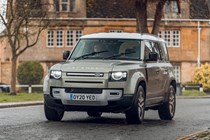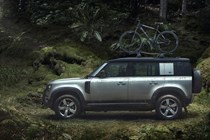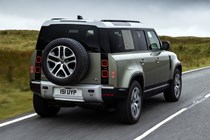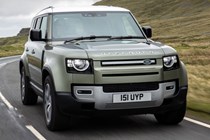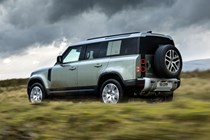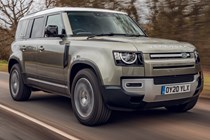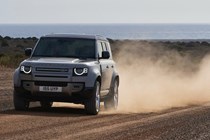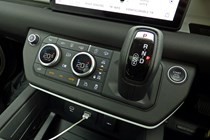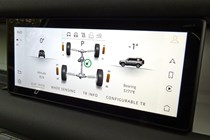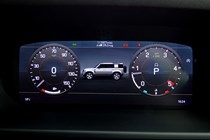
Land Rover Defender 110 running costs and reliability
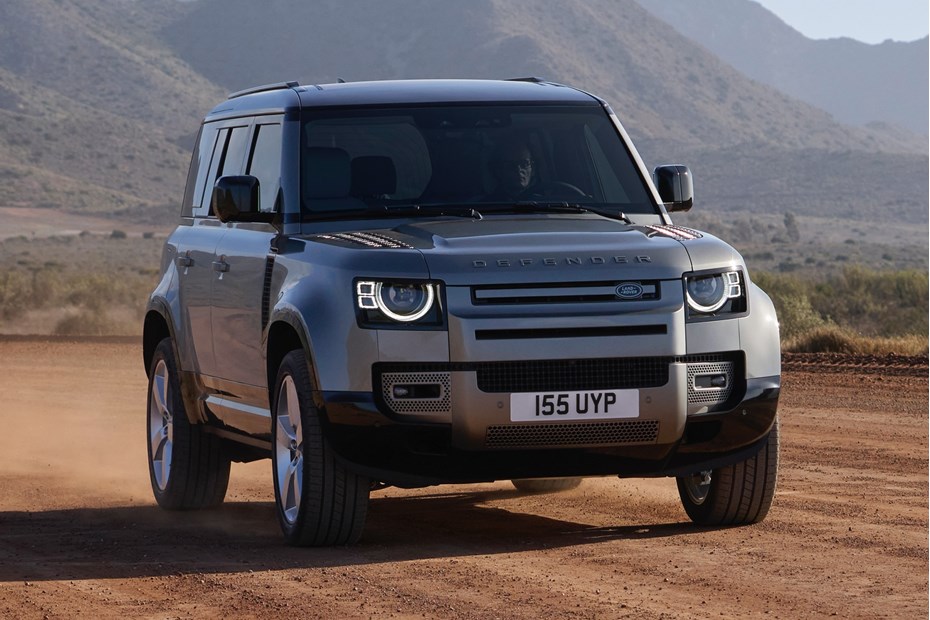
Miles per pound (mpp) ⓘ
| Petrol engines | 2.7 - 3.9 mpp |
|---|---|
| Diesel engines | 3.7 - 4.3 mpp |
| Plug-in hybrid petrol engines * | N/A |
Fuel economy ⓘ
| Petrol engines | 18.7 - 26.4 mpg |
|---|---|
| Diesel engines | 29.3 - 33.6 mpg |
| Plug-in hybrid petrol engines * | N/A |
- Don’t expect any to be cheap to fuel
- The plug-in hybrid version is the most efficient version on paper
- Up-front servicing plans available
What are the running costs?
The Land Rover Defender 110, for the most part, isn’t going to be cheap to run. But choose wisely and you can at least choose one that’s not too uneconomical, and then give it an up-front servicing plan to minimise your running costs.
Almost all of the regular engines are 3.0-litres, after the short-lived 2.0-litre four-cylinder models the Defender was launched with were dropped in late 2020. The exceptions are the 2.0-litre four-cylinder in the plug-in hybrid, and the V8.
The thriftiest of the non-electrified engines is the D250 diesel – Land Rover claims a 31.8mpg economy figure. In the real world we managed 29.3mpg when we tried it in the smaller 90, most of which was spent on the motorway. That’s a pretty poor figure in this day and age, especially from a diesel. The D350 isn’t much less efficient, and both will return north of 30mpg if you’re on gentler rural roads.
The P400e is the most economical, even if you’re extremely unlikely to see the claimed 84.2mpg in real-world driving settings unless you keep the battery constantly charged up. Even so, during our time with the PHEV we managed around 44mpg – much more than the claimed figures of any of the ‘regular’ engines. Don’t charge the battery and this will drop to well below 30mpg, though.
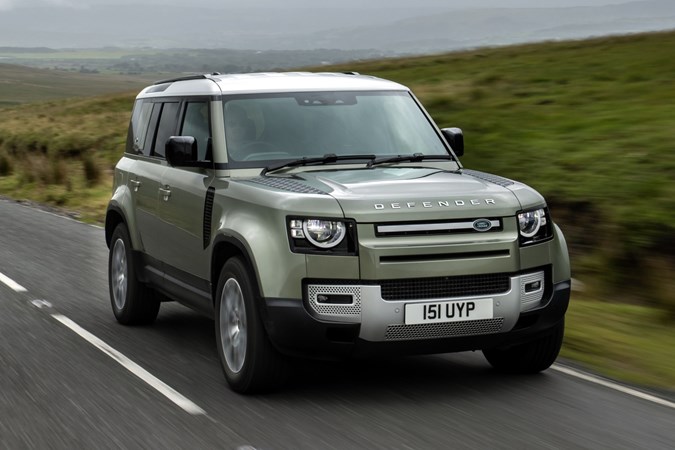
Even so, emissions are high for a plug-in hybrid at 79g/km. That still means company car tax bills far more palatable than any other Defender, but higher than the vast majority of other plug-in hybrids. That’s partly because the electric-only range is below 30 miles whereas SUVs like the Mercedes GLE and BMW X5 PHEVs can manage over 50 miles on a single charge.
If you’re after something with more performance, the Defender V8 fills that slot handsomely. Seeing that it’s got 5.0-litres of capacity, it’s no surprise that there’s a price to pay at the pump, with an official 19.1mpg and 334g/km of CO2 claimed for it.
If you want the economy figures for the entire Defender model range, have a look at our specs and dimensions page.
Servicing and maintenance
Land Rover offers a number of Service Plans, which are designed for cost-effective maintenance of new and approved-used vehicles up to 10 years old with fixed up-front payments. You can make a one-off payment or spread the cost with monthly payments.
Service plans are transferable between owners as long as the schedule is adhered to via Land Rover dealers.
Reliability
- The old Defender sets a low bar to improve upon
- Land Rover promises this one is much more reliable
- Our experience suggests otherwise
This is a large, sophisticated 4x4 with a Land Rover badge, so don’t be surprised by the odd issue or gremlin. Land Rover’s build quality has improved immeasurably in recent years, and the company continues to work hard in this respect – but a Toyota Land Cruiser will be far more dependable.
We’ve even had our own experience of this, with an electrical fault in a P400e requiring a call for recovery. The company has some way to go in customer satisfaction surveys, not even making it into the top 20 of Fleet News’ FN50 reliability survey, though, even if generally Land Rover’s cars are seen as being robust.
Ongoing running costs
| Road tax | £620 |
|---|---|
| Insurance group | 31 - 50 |
Get an insurance quote with

|
|



